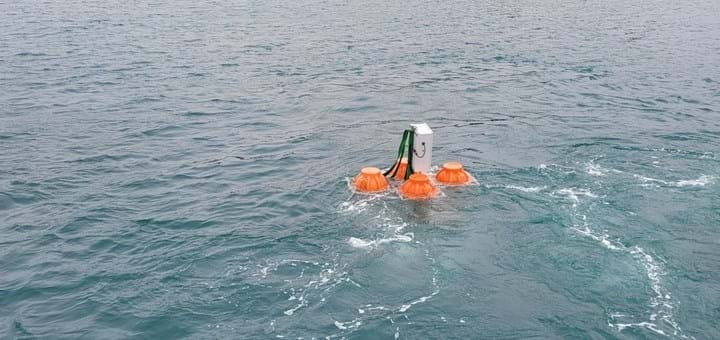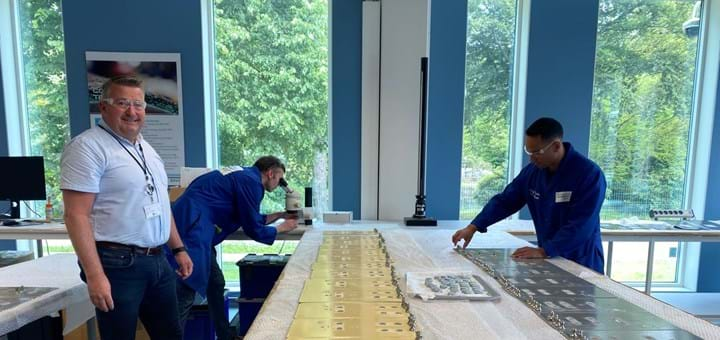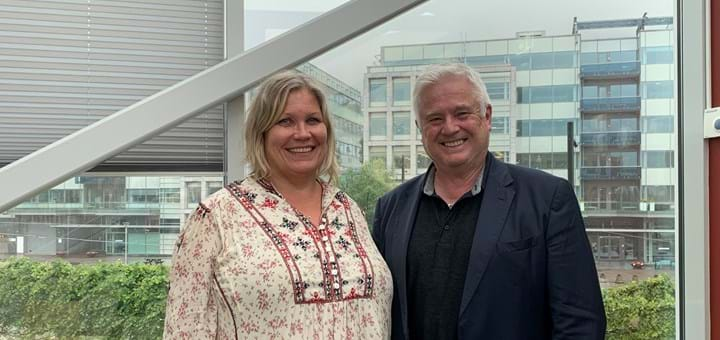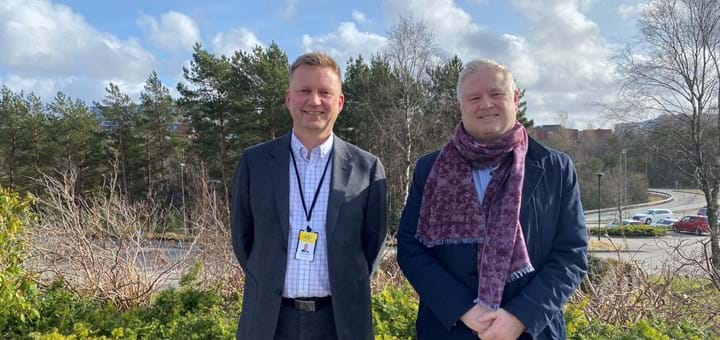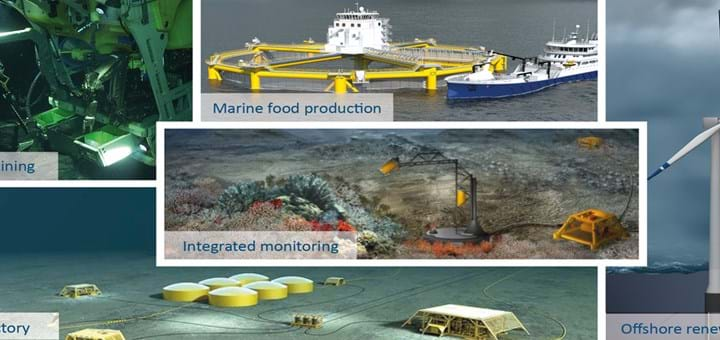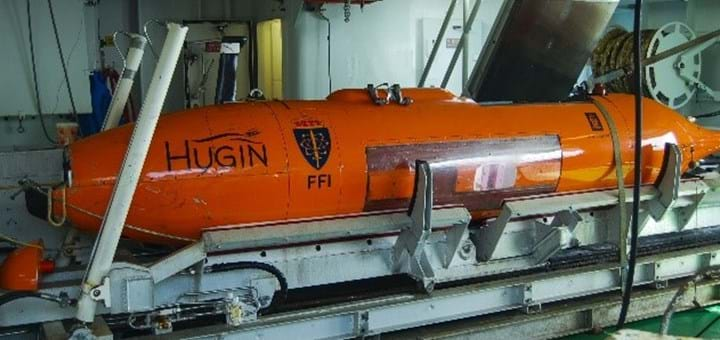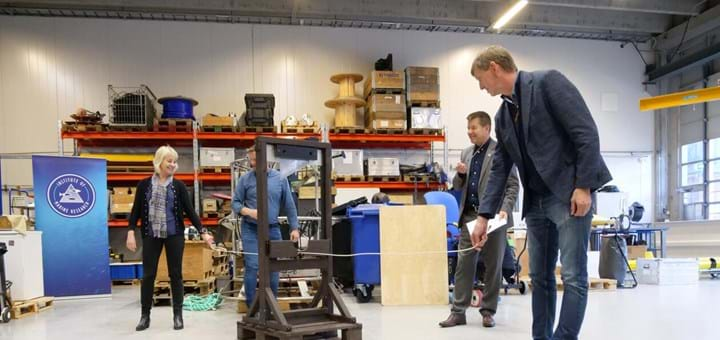UiB signs new partnership agreement
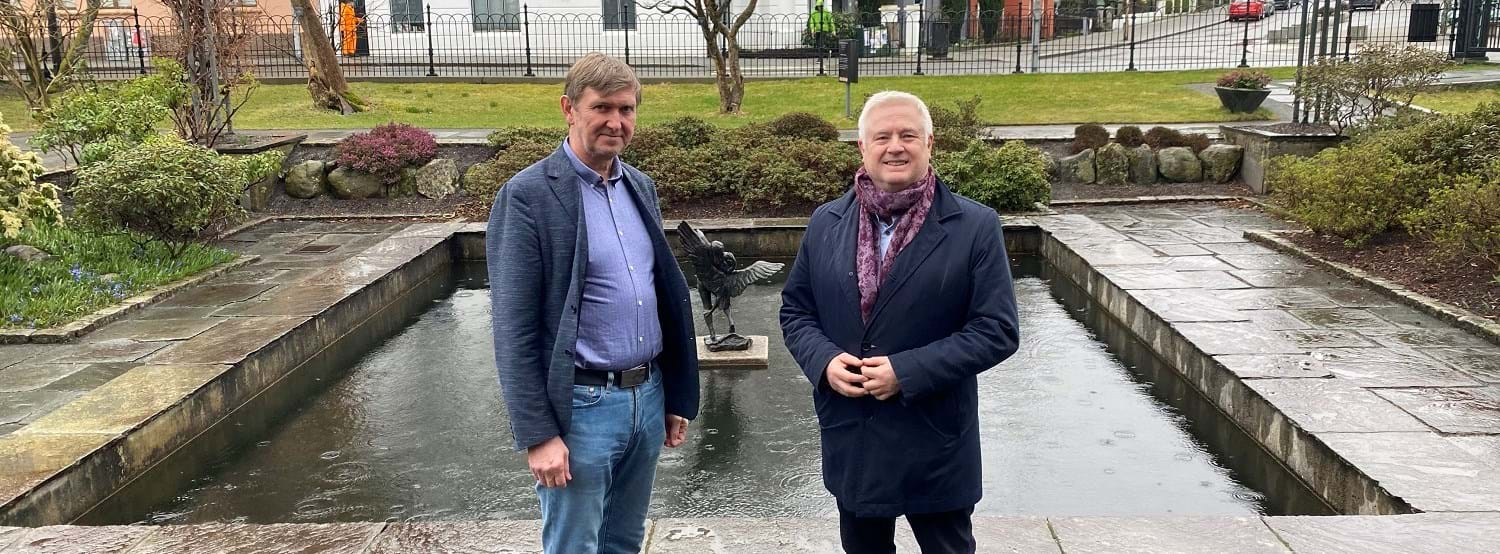
The University of Bergen has entered into a new partnership agreement with GCE Ocean Technology to strengthen the dialogue and collaboration with the ocean industries, also concerning a wireless underwater network.
The history and collaboration between UiB and the ocean industries dates back to 2013 when the university first became partners in GCE Ocean Technology. The goal was initially to establish closer links and cooperation between the business community and academia and to tailor education to the needs of the business community.
The partnership has led to a number of collaborative projects. One of them is SFI Smart Ocean, a Centre for Research-based Innovation. Here, researchers at the University of Bergen are in the process of creating a wireless observation network underwater, to monitor the environment and obtain important information.
The work takes place under the auspices of SFI Smart Ocean. The University of Bergen hosts the effort where employees at the Department of Physics and Technology work together with partners within research and industry.
– Today, data collection takes place on and below the water surface mainly by means of cables. Such solutions are inflexible and expensive to install and maintain. A wireless network in the oceans will enable measurements where cable networks are irrelevant, for financial and practical reasons, says Øyvind Frette who is vice-dean for research and innovation at UiB.
The University of Bergen wants to develop the collaboration with the industry in the region, and partnership in GCE Ocean Technology is an important tool in this work. Øyvind Frette.
Initiative from GCE Ocean Technology
He is one of the leaders at the Faculty of Mathematics and Natural Sciences, which hosts SFI Smart Ocean, and he is also involved in the cluster; GCE Ocean Technology where the University of Bergen is a partner.
–The initiative to create a wireless network actually came from GCE Ocean Technology. This is a good example of useful interaction between research and industry, something we want to strengthen further, says Frette.
The center's employees have been working since the autumn of 2020, among other things through digital gatherings and by placing equipment and performing tests. But due to the pandemic, they could only first meet physically at the university in November last year. At that time, an official opening was performed where, symbolically enough, a network cable was cut.
Three main areas
The project will run for five plus three years and has a budget of NOK 290 million, of which NOK 96 million comes from the Research Council of Norway. After five years, the work is evaluated, to be approved for another three years.
Smart Ocean is supported by both industry and research partners as well as by public authorities, and the work is aimed at user groups within three main areas:
- Ocean environment
- Ocean industry; mainly offshore wind, the petroleum industry and aquaculture
- Society and administration
Using the subsea network, information and measurements shall be sent to databases. They will conduct environmental monitoring and measure temperature, salinity, ocean currents, CO2 and pH, and more.
Useful collaboration
In addition to finding facts for management and environmental protection, the network can also be used to monitor equipment and structures underwater. The system will be able to sound an alarm when the sensors indicate that there is "danger ahead" and that something may go wrong.
– This is an observation system that many will benefit from, both industry, society, administration and marine scientists, says Frette who praises the good collaboration with GCE Ocean Technology and the cluster members.
– The interaction is useful to UiB also in fields other than Smart Ocean. We collaborate on various projects also through the Center for Deep Sea Research and the Bergen Offshore Wind Center (BOW). In addition, there are the cluster events where we share knowledge and get a lot of good input. The University of Bergen wants to develop the collaboration with the industry in our region, and partnership in GCE Ocean Technology is an important tool in this work.
Contact Information


Facts
The University of Bergen (UiB) is one of 18 partners from industry, R&D, academia and public bodies, which has recently signed a new 5-year agreement with GCE Ocean Technology.
The partners in the cluster are the leading force, and the backbone of the cluster's strategic work.
The partners get access to various arenas and projects where they meet potential customers, suppliers and partners.
Here, valuable knowledge is developed and shared between the cluster's +150 partners and members and collaborators.
Further Reading
Related Event
GCE Ocean Technology Events
Other events

